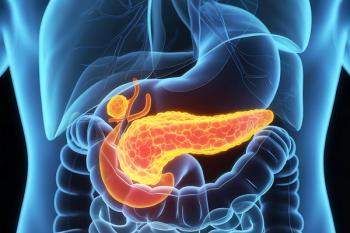
The Effect of Time and Tide On PFAS Concentrations in Estuaries
Oliver Jones and Navneet Singh from RMIT University, Melbourne, Australia discuss a recent study they conducted to investigate the relationship between tidal cycles and PFAS concentrations in estuarine systems, and offer practical advice on the sample preparation and LC–MS/MS techniques they used to achieve the best results.
Can you describe the chromatographic and sample preparation techniques selected for your recent research project investigating variations in concentrations of per- and polyfluoroalkyl substances in estuaries in relation to tidal cycles (1)? Did you encounter any challenges from an analytical chemistry perspective, and if so, how did you overcome them?
Navneet (Nav) Singh: Solid-phase extraction (SPE) was the primary sample preparation method for separating PFAS. Specifically, 200 mL water was loaded onto weak anion exchange (WAX) SPE cartridges after conditioning and equilibration. A 1% ammonium hydroxide in methanol solution was used to elute the compounds. Extracts were then analysed using liquid chromatography-tandem triple quadrupole mass spectrometry (LC–MS/MS). This method is essential for the sensitive and selective detection of PFAS, but it brings its own challenges, such as:
High Total Dissolved Solids (TDS): Elevated TDS levels in some river water samples blocked the SPE cartridges. We had to use multiple cartridges per sample to distribute the load evenly, preventing blockages and ensuring effective extraction.
Elution contamination and recovery issues: Initially, nitrogen blow-down was used to concentrate the SPE extracts, but we had to abandon this approach due to inconsistent recoveries and contamination risks. Instead, a positive displacement manifold (rather than a vacuum manifold) utilising nitrogen was employed. This approach minimized contamination and improved analyte recovery by allowing precise control over the elution flow rate.
Matrix effects due to high salinity: Samples from estuarine environments have relatively high salt concentrations (due to being partly seawater). These pose significant analytical challenges, causing instrument blockages and poor chromatographic performance. We used SPE cleanup to reduce salt concentrations, safeguarding the LC–MS/MS instrumentation. We also found that measuring samples’ pH and electrical conductivity (EC) before injection is crucial because high EC levels indicate that a high amount of salt is present, meaning direct injection could cause instrument blockage.
Loading and elution: The elution flow rates needed to be monitored consistently to ensure precision. Slower speeds showed better recoveries, so it was important not to elute too fast.
Background Contamination: PFAS are widespread in the environment, so PFAS analysis also means using stringent Quality Assurance and Control (QA/QC) protocols. These included performing calibration checks before and after each batch of samples, running blanks every ten samples, and using isotopically labelled surrogates and internal standards. These are all critical to achieving accurate quantitative detection of low parts-per-trillion (ppt) concentrations of PFAS.
Oliver Jones and Navneet Singh from RMIT University, Melbourne, Australia
Does sample preparation affect the accuracy and reliability of PFAS measurements in water samples?
Singh: Sample preparation plays a critical role in ensuring accurate and reliable measurements of PFAS in water samples. Background contamination from the environment and consumables must be thoroughly addressed by exclusively using PFAS-free reagents, consumables, and sample containers. Additionally, vortex mixing samples before subsampling for extraction is essential, as many PFAS are quite ‘sticky’ and tend to adhere strongly to the sides of containers, potentially affecting recovery and quantification accuracy.
How can tidal cycles influence PFAS concentrations in estuarine systems?
Oliver Jones: There are several ways tidal cycles can influence PFAS concentrations in estuaries. The main one we saw in this study was that at high tide, the influx of relatively low PFAS concentrations in seawater diluted PFAS concentrations in the estuary. This led to lower concentrations of PFAS at high tide compared to low tide – and vice versa. We saw between four- and seven-fold differences in concentrations of ΣPFAS during the 24-hour sampling period. It is also possible that the increase in salinity when the tide comes in could cause PFAS in the water column to bind to sediment (which itself may be resuspended by the tide). This is something we plan to look at in future.
Why is it important to monitor PFAS concentrations over time rather than at a single point?
Jones: Well, the simple answer is that in dynamic systems like estuaries or wastewater treatment plants, the concentrations of PFAS and other contaminants can vary quite a lot over a day. For example, samples taken at high tide may have lower concentrations of PFAS than samples taken at low tide. Also, while samples taken at low tide will likely provide the maximum possible concentration experienced, sampling at multiple points during a day, composite sampling, or passive samplers will be needed to get accurate data on the range of PFAS concentrations in a system that organisms are exposed to.
What was the most prevalent PFAS compound detected in the study, and what was its maximum concentration?
Singh:The most prevalent compound in our study was Perfluorohexanesulfonic acid (PFHxS). This was the PFAS found at the highest concentration at all three sites tested at a maximum concentration of 72.3 ng/L. Other common compounds included legacy PFAS such as Perfluorooctanoic acid (PFOA) and Perfluorooctane sulfonate (PFOS) as well as Perfluorobutane sulfonic acid (PFBS), Perfluorohexanoic acid (PFHxA), Perfluoroethylcyclohexane Sulfonate (PFECHS) and 6:2 Fluorotelomer sulfonic acid (6:2 FTSA).
What environmental parameters may influence PFAS concentration fluctuations in estuaries?
Jones: In addition to tide height (and thus salinity and electrical conductivity), other environmental factors such as temperature, pH, redox potential, and dissolved oxygen may play a role in fluctuations of PFAS concentration in estuaries. We measured these while sampling, but, in our case, at least, tide height seemed to be the primary factor involved. Further tests on salting out and mixing zones are underway, but you will have to wait for the next paper on those.
Are there any other aspects of this research that are worth highlighting?
Singh: One interesting finding was that we found Perfluoroethylcyclohexane sulphonate acid (PFECHS) in nearly all samples. This is a more recently created PFAS, and we are not sure what the source of this compound might have been. It has previously been reported in an urban lake near the current study sites. That study suggested that high-performance motorsport vehicles might have been the source, but we aren’t sure where it came from. Another interesting finding was what we didn’t see. Although commonly reported in the US and Europe, Hexafluoropropylene Oxide Dimer Acid (Gen X) was not found in any of the samples from this study. This is consistent with previous studies and would suggest that GenX is not being used to any great extent (if at all) in Australia, which is quite different from some other countries.
What are the implications of this study for future PFAS monitoring strategies your group is involved in?
Singh: Our work has several implications for future PFAS monitoring strategies in estuaries. Whilst readers may feel that the fact that concentrations of PFAS vary with tide height is not a surprising finding, many studies only report single measurements of PFAS concentration - this may not give the complete picture. Since there is substantial temporal variation in PFAS concentrations, taking single-grab samples at the wrong time may underestimate or overestimate PFAS concentration in these systems. For instance, suppose you want to find the maximum concentration experienced by an organism in a particular estuary. In that case, you may need to sample at low tide. Similarly, sampling at multiple points will be needed to understand the dynamic range of PFAS in estuaries, and if you're going to compare estuaries, then you ideally need to sample at the same point in the tide cycle. Our data also indicate that studies assessing the risk of PFAS to estuarine organisms must be carefully designed to account for factors such as freshwater tolerance, mobility, and habitat (benthic or pelagic) that may strongly influence their potential PFAS exposure
Oliver (Oli) Jones is a professor of chemistry at RMIT University. Melbourne, Australia. He obtained his PhD from Imperial College London. He worked at the University of Cambridge and the University of Durham before moving to RMIT in 2012 (to get a few years’ experience working abroad). His research expertise is in the field of analytical biological and environmental chemistry. He is particularly interested in tracking the fate and behavior of pollutants in the environment. Oliver has received over 20 awards, including the National Measurement Institute Barry Inglis Medal. He has over 140 peer-reviewed publications with an h-index of 43 and over 9650 total citations.
Navneet (Nav) Singh is a PhD student in applied chemistry at RMIT University, Melbourne, Australia. He obtained an honors degree in chemical engineering from RMIT in 2018 and then moved to industry before returning to postgraduate study in 2022. His PhD is focussed on the fate and behavior of PFAS in and around Port Philip Bay in Melbourne. Nav is an experienced analytical chemist and application specialist with more than six years of experience in environmental consulting and advanced analytical method development with a strong focus on PFAS (and other emerging contaminants). Nav enjoys connecting ideas, people, and processes to make a positive impact.
References
(1) Singh, N.; Paz-Ferreiro, J.; Askeland, M. P. J.; Coggan, T. L.; Jones, O. A. H. Concentrations of Per- and Polyfluoroalkyl Substances in Estuarine Systems Can Vary Greatly Within Tidal Cycles. Sci. Total Environ. 2025, 974, 179196. DOI: 10.1016/j.scitotenv.2025.179196
Newsletter
Join the global community of analytical scientists who trust LCGC for insights on the latest techniques, trends, and expert solutions in chromatography.





